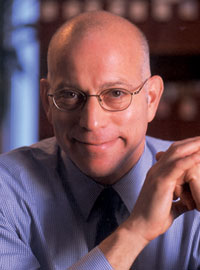Tiny ice crystals blew sideways, stinging the January air, as the bald man with a scowl made his way from his mid-Manhattan apartment to a debate a few blocks away. Ira Kay was on a mission to defend rising executive compensation against the outrage of dissatisfied shareholders, governance activists and anyone else who might cross his path. He faced a headwind of popular resentment.
The Occupy Wall Street revolt already was in retreat that bitter morning in early 2013 but the “people-powered movement” underscored the gap between the 1 percent and everybody else in America as a new dividing line in contemporary society. In the 3-1/2 years since the economy began recovering from the worst financial crisis since the Great Depression, the wealthiest Americans had watched their incomes grow by nearly one-third while the rest nursed 0.4 percent gains, inspiring one protester in Zucotti Park to hold aloft a cardboard sign stating, “Give Class War A Chance.”
Related: Some CEOs Are Still Cashing In at Our Expense
Considered by many clients and competitors to be the top CEO-compensation consultant in the business, the 63-year-old Kay — square-shouldered with small, round eyeglasses — is a managing director of New York-based Pay Governance LLC, which represents board compensation committees at one out of every 10 Standard & Poor’s 500 corporations.
Non-management directors set chief executive pay at public companies; and, in recent years, most boards hired independent consultants such as Pay Governance to guide them. In only its fourth year of existence, Kay’s firm is the second-leading compensation consultant to big-company boards, behind Frederic W. Cook & Co., founded in 1973. Unbeholden to management, Kay’s job is to incentivize without being excessive for marquee clients such as Alcoa, DirecTV, McGraw Hill Financial, Morgan Stanley and Wal-Mart Stores.
Were shareholders to envision one person to champion their interests, it might well be this son of a used-car salesman. Kay’s family struggled for money as he grew up in a lower middle-class neighborhood of Long Island. His Russian-immigrant grandfather sewed women’s dresses in a union shop for decades, and he dreamed of becoming a trade organizer, once he’d earned his Ph.D. in labor economics.
Yet Kay is an unabashed proponent of blockbuster pay for management, citing the stock market as an independent arbiter of performance, true to shareholders, boards and executives alike, he told me during the course of several interviews before the 2014 shareholder proxy season.
“One of the reasons the U.S. economy has outperformed Japan and Europe is because of our executive pay model,” Kay says. “Companies are setting reasonably challenging goals, they’re beating them and their stock prices are going up. I don’t know what else somebody would want.” He worries that take-it-to-the-street demonstrations embodied by the Occupy movement and shareholder activism empowered by the Dodd-Frank Wall Street Reform and Consumer Protection Act of 2010 hem in investor capital, sapping management and the stock-based awards that confer the biggest part of its earnings power. “I believe executives are going to end up substantially lower paid over the next 10 years,” he warns.
By selectively quoting the market, Kay and other executive-compensation specialists are little-known architects of pay-bracket bulge for the 1 percent. On average, Pay Governance’s S&P 500 clients pay their CEOs $1.6 million more than the companies’ median peers, an analysis of their 2012 proxy filings shows. Among the biggest payers were Walt Disney at $25 million above median; eBay $18.2 million; Viacom $17.3 million; and Time Warner $10.5 million, according to an analysis for The Fiscal Times by Columbia University researcher Mathijs de Vaan. Disney replaced Pay Governance with Cook last year.
The executives may merit superior compensation. But traditional analysis might also understate just how much more than their board-selected peers CEOs make. On average, Pay Governance’s big-company clients pay their CEOs $3 million above median, relative to 100 alternative peer groups de Vaan produced randomly for each client, based on comparable industry codes, revenues and market capitalizations. Kay, in an email, called the methodology behind the analysis "deeply flawed."
| PAYING MORE THAN PEERS | |
| When boards pay CEOs above the median of the company’s self-selected peers, shareholders and corporate governance activists often want to know why. Pay Governance’s highest above-median CEOs, based on their 2012 proxies: | |
| COMPANY | CEO PAY: |
| Walt Disney | $25 Million |
| eBay | $18.2 Million |
| Viacom | $17.3 Million |
| Time Warner | $10.5 Million |
| Wynn Resorts | $7.4 Million |
| Source: Columbia University research | |
Unregulated, under-scrutinized and with unseen board-room influence, compensation consultants typically speak softly and carry a big stick. Kay doesn’t speak softly, though. Walter Bardenwerper, the retired general counsel of compensation consultant Towers Watson, says he remembers Kay’s booming voice piercing the walls of the boardroom that belonged to their employer, Watson Wyatt & Co., as he and partners plotted taking the firm public years ago. Today, Kay appears mostly before sympathetic audiences, including rich clients, to argue that the executive compensation system, far from being broken, makes America great.
“In the 1970s, companies recruited and rewarded CEOs like bureaucrats, but with the implementation of stock options they started recruiting and rewarding CEOs like entrepreneurs,” he said at the Human Resources Policy Institute, a partnership of Boston University’s School of Management and human resources executives, in May 2007. “It is this change that has fueled economic growth.”
The 55 big-company boards that employed Pay Governance awarded their CEOs $712 million in 2012, according to 2013 proxy filings. Most is what Kay calls “opportunity pay” — stock and options dependent on a company’s future performance, as presented in the annual proxies’ summary compensation tables.
A separate calculation by Greg Ruel, a senior research analyst at governance consultant GMI ratings, shows the executives took home an eye-popping $845 million in “realized” compensation, combining salary, bonus, pension contributions, perquisites and the market value of vested stock and exercised options. DirecTV CEO White, who is employed by one of Kay’s big-company boards, was granted $18 million in 2012 and realized $50.8 million, buoyed by a 50 percent rise in the broadcaster’s share price during his three years on the job.
Kay is paid handsomely, as well, though Pay Governance is privately owned and does not disclose principals’ earnings. At his former employer, Watson Wyatt & Co., Kay made $865,390 a year and owned company shares worth $2.4 million, according to the firm’s last disclosure on Kay in October 2006.
Now, as one of three managing directors at Pay Governance, Kay oversees a firm that collects anywhere from $39,717 in consulting fees from Xcel Energy in 2012, according to the utility company’s proxy, to 10 times that amount, $399,477 from Computer Sciences. Last year, Computer Sciences said it had replaced Pay Governance with rival compensation consultant Pearl Meyer & Partners; Xcel hired Meridian Compensation Partners. Kay, who managed neither account, told me he personally handles more than a dozen large clients, some won recently, such as Morgan Stanley and McGraw Hill.
Source: 2013 SEC proxy filings
Standing in opposition to Kay at the debate that January morning was Charles Elson, director of the John L. Weinberg Center for Corporate Governance, whose courtly etiquette and lazy eye, or amblyopia, disguise the steely resolve with which he has clashed with corporate leaders and their consultants for decades. During the Enron debacle, he may have been the most over-quoted conscience in America. Beside him was a frightened-looking graduate fellow, Craig Ferrere, who had proposed the published paper that was the subject of the day’s argument: “Executive Superstars, Peer Groups and Overcompensation.”
Elson and Ferrere contend markets aren’t deadly efficient pricing guns for talent and boards aren’t pocket holsters for management, but the practice of benchmarking CEO compensation to the median of a peer group has an “upward bias” – a ratchet effect – that lifts the boss’s pay over time. As incomes rise for top performers, median comp goes up for slackers, as well.
Related: Wider Wealth Disparity Between CEOs and Workers
Benchmarking originated after World War II when Milton Rock, a partner at one of Ira Kay’s first employers, the Hay Group consulting firm, produced an encyclopedic classification of managerial descriptions that made mid-level talent comparable across industries. Boards and compensation consultants appropriated this transferability-of-talent concept to support the CEO “superstar theory: a great manager can run any company,” Elson said at the debate. Yet because CEOs rarely change jobs, boards should focus on internal metrics for evaluating the leader, and enforce pay equity up and down the line, rather than rely on outsiders as proxies for a competitive market, he said.
“Pay awarded to chief executives is becoming profoundly detached from not just the pay of the average worker, but also from the companies they run,” Elson argues.
Opportunistic peer selection raised CEO pay by $1.2 million at the median in 2007, according to an analysis by business scholars Michael Faulkender at the University of Maryland and Jun Yang at Indiana University. Lesser-paid CEOs benefit by getting lumped in with higher-paid peers, the academics found, drawing on new details about the composition of CEO peer groups the Securities and Exchange Commission required from annual proxy filings beginning in late 2006.
“The pay differences are always greater in firms with weak corporate governance than in firms with strong corporate governance,” academics Faulkender and Yang concluded.
3M benchmarks its CEO’s pay against 19 industrial companies, according to the 2014 proxy, yet three times that number – 62 companies – peg their boss’s compensation to 3M, pay tracker Equilar found.
At the debate, Kay defended peer groups as “flawed” but “the only game in town” for simulating a market quote for CEO talent. And he dismissed as yesterday’s headline the suspicion that some boards select peer groups to maximize the boss’s pay rather than to mirror the company’s performance.
“That game is over!” Kay bellowed. Compensation consultants and directors defend their choices as qualitative as well as quantitative, reflecting experience and the companies’ unique characteristics.
While Kay’s CEOs may deserve to be better compensated than their peers, traditional peer-group analysis “understates” the extent to which they may be overpaid, says de Vaan, a Ph.D. candidate in economic sociology at Columbia University. Twenty-nine out of 50 big-company clients advised by Pay Governance remunerated their CEOs above the 50th percentile, averaging $4.7 million more apiece in 2011, according to the proxies de Vaan reviewed. The average for the group, including under payers, was $1,636,681 more than the median named peer, de Vaan found. Five companies that benchmarked CEO pay against an index, or provided insufficient information were not analyzed. I extracted the identities of Pay Governance’s S&P 500 clients from the index companies’ proxy disclosures.
de Vaan then randomly produced 100 alternative peer groups for each client. The simulations involved replacing every peer with an alternative closely resembling the benchmarking company, based on three separate measures: annual revenue, market capitalization and the Global Industry Classification Standard. He found that Pay Governance’s boards chose CEO benchmarks with an upward pay bias of $1.4 million relative to other companies with similar identifying characteristics. Add to this the $1.6 million the companies already pay more than their named median peer, and it means that, on average, the CEOs of Pay Governance’s S&P 500 clients are granted $3 million more than their simulated peers.
“Even firms that employ CEOs who have not excelled in the last year have the tendency to adjust the peer groups opportunistically in the next year,” says de Vaan, drawing from an unpublished paper co-authored with Columbia Sociology Professor Tom DiPrete, “Setting Executive Pay: Bias in the Change of Compensation Peer Groups,” which examines benchmark relationships at 1,348 U.S. corporations.
Related: Corporate Perks Go from Flash to Cash
Two of Kay’s clients, DirecTV and Alcoa, illustrate how peer selection can benefit the CEO.
DirecTV CEO White joined the company in late 2009 just as Kay was picking up the board contract from his former employer, Watson Wyatt. DirecTV deleted British Sky Broadcasting from its 15-member media peer group for 2012 “because of the limited access to executive pay data” in the U.K., according to the 2013 proxy statement. British Sky paid CEO Jeremy Darroch $4.6 million in 2012, according to Sky’s compensation report, making it by far the lowest-paid peer in DirecTV’s benchmark group.
In its place, DirecTV restored former benchmark Charter Communications, “because it had emerged from bankruptcy,” according to the proxy statement. Charter had actually exited bankruptcy three years earlier, eight months after filing. More recently, the company doubled its CEO’s pay to $20.5 million, almost five times more than British Sky paid. Disney, Time Warner and Viacom also are DirecTV peers, and three of the four highest-paying companies relative to their peers in the Pay Governance client portfolio of S&P 500 companies, de Vaan found.
| PICKING PEERS AT DIRECTV | |
| DirecTV replaced British Sky Broadcasting as a peer in 2012 "because of the limited access to (its) executive pay data," according to the company's proxy statement. Charter Communications returned, after removal in 2010, "because it had emerged from bankruptcy." In fact, Charter left bankruptcy three years earlier and British Sky continues to report compensation. The swap produced a five-fold increase from DirecTV's previously lowest-paid peer. | |
| COMPANY | CEO PAY |
| CBS | 69,900,677 |
| Discovery Communications | 52,404,119 |
| Viacom | 43,123,552 |
| Walt Disney | 31,363,013 |
| News Corp. | 30,022,292 |
| Time Warner Inc. | 25,938,721 |
| *Charter Communications | 20,538,347 |
| Time Warner Cable | 16,433,828 |
| Liberty Global | 13,814,211 |
| Sprint Nextel | 11,882,651 |
| Cablevision Systems | 11,445,228 |
| Dish Network | 9,845,632 |
| CenturyLink | 8,554,284 |
| DirecTV | 5,937,078 |
| Gannett | 4,693,809 |
| **British Sky Broadcasting† | 4,378,030 |
| Source: 2012 SEC proxy filings | *Charter Communications added to peer group. **British Sky Broadcasting deleted from peer group. †British sterling converted to U.S. dollars |
Another Kay client, Alcoa, benchmarked Chairman and CEO Klaus Kleinfeld’s pay to the median of dual titled chairmen-CEOs at Coca Cola, Google, McDonald’s, Merck & Co. and Time Warner, among others.
“Our aluminum industry peers do not provide an adequate basis for compensation purposes because there are too few of them, they are all located outside of the United States and they do not disclose sufficient comparative compensation data,” Alcoa said in its 2012 and 2013 proxy statements, after Kay took over the board compensation-consulting contract. Yet only 20 percent of Alcoa’s public company peers reciprocated — nine out of 46, according to a review of the companies’ 2013 proxies — while three others were a privately owned grocery wholesaler, a not-for-profit foundation and the office-products subsidiary of a foreign corporation, whose peer information is not readily available.
Alcoa decided “to develop a more relevant peer group to inform compensation decisions for the CEO” last November, the company stated in its March 2014 proxy statement. The decision came 10 months after the Conference Board debate. Instead of consumer companies and tech juggernauts, the new reference group encompasses 19 materials and industrials companies such as Freeport-McMoRan Copper & Gold, Newmont Mining and U.S. Steel, nearly half of which (eight) consider Alcoa peers.
| SETTING THE BENCHMARKS | |
| Under pressure to justify CEO pay, boards frequently compare the top executive’s compensation to a self-selected group of peers.* The leading benchmarks for Standard & Poor’s 1500 companies | |
| CATEGORY | NUMBER OF COMPANIES |
| Industry | 1,202 |
| Revenue | 920 |
| Market Capitalization | 693 |
| Competitor For Talent | 583 |
| Business Model | 431 |
| Direct Competitor | 286 |
| Geography | 249 |
| Assets | 223 |
| Number of Employees | 157 |
| Profitability | 121 |
| Source: Equilar | * 91% use one peer group, 8% use two peer groups |
The new group still doesn’t include direct competitors Aluminum Corporation of China or Shandong Nanshan Aluminum Co.; Australia’s Alumina Ltd.; India’s National Aluminium Co. Ltd.; Norway’s Norsk Hydro ASA or Russia’s United Co. Rusal, all of which are publicly traded. It’s an indication that while labor has become a global commodity, CEO pay remains something of a local proposition.
“Executive compensation is a very puzzling and confusing and baffling subject for most investors,” says management consultant Michael Levin, who writes The Activist Investor blog. “Every time we think we have a way to understand it better, it gets worse. At some subconscious level, all the pay consultants, not just Ira Kay, are doing this not just to reward people — but to make it more opaque.”
Top Reads from The Fiscal Times:


